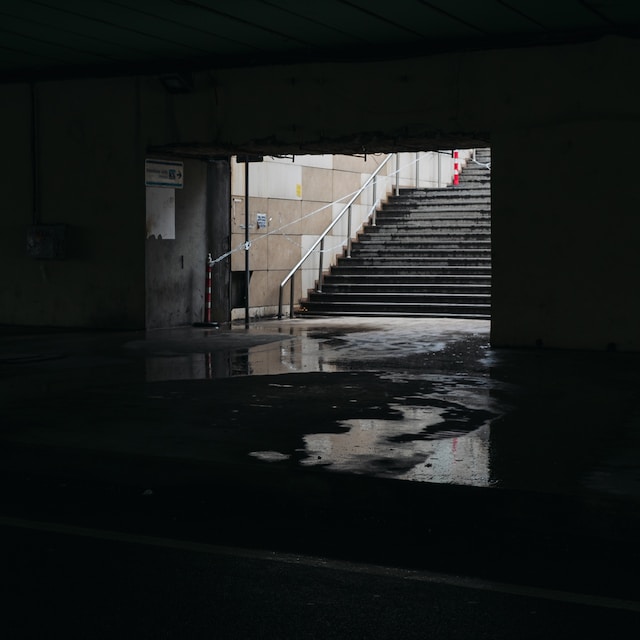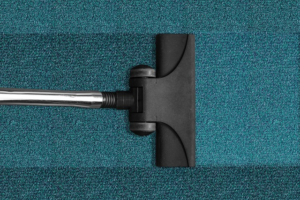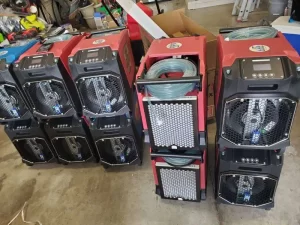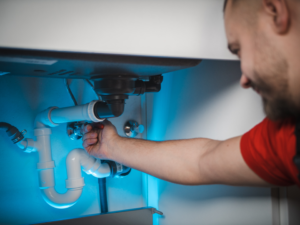After a water leak, drying out your hardwood flooring is a top priority to avoid further damage and potential hazards. While attempting to fix it yourself may not yield the best results, calling a professional water damage restoration company can be a game-changer.
These experts have the know-how, specialized equipment, and experience to swiftly dry out your floor, preventing long-term issues like mold and structural damage. Save time and ensure a safe environment by reaching out to a water damage restoration company now and get your floor back to normal in no time!
The Drying Process: How To Dry Out Your Flooring After Water Damage
Safety First
Flooding is nothing to mess around with – standing water in your home can lead to electric shock, and unstable floors and walls. Flood water itself can also be incredibly dangerous, often full of dangerous debris, harmful bacteria, and other contaminants.
Take the following precautions before entering a flooded area:
- Turn off your electric and gas: There’s a high risk of submerged electrical outlets or downed lines in the affected area, which could lead to electric shock.
- Gear up: No matter what type of water has infiltrated your home, it is best to wear rubber boots, rubber gloves, and safety goggles.
- Call a water restoration company: If you’re dealing with heavy flood waters or raw sewage, it is best to leave dirty water cleanup to professionals, as the water can be toxic, and your home may be structurally unsound.
Moisture Removal: Air Out The Room & Remove All Impacted Items
Weather permitting, open windows and doors to circulate air and kickstart the drying process. If you see lots of standing water, use a pump or wet vacuum to remove as much water as possible.
Once the visible water is mostly gone, start using large fans and dehumidifiers to help circulate fresh air and remove excess moisture.
Then, start sorting through wet items and furniture, removing all water soaked items. Things like mattresses, floor coverings, and books likely will not be salvageable, but solid wood furniture can generally be repaired if you don’t find signs of rot.
Drying your home can take days, even several weeks. You need to act as soon as possible to salvage what you can and remove what you can’t.
The Drying Process By Flooring Type
No matter what type of flooring you have, water damage can cause pretty significant problems. However, the way you approach each type of floor will be different.
We’ve broken down our advice by type of flooring:
How To Dry Carpet After Floods
When water gets on the carpet, it immediately starts soaking into the fibers causing mold growth. This can make carpet some of the hardest flooring to dry after a flood.
Use a wet dry vacuum to remove standing water and pull water out of the fibers. Then, it’s time to rip it up. You may be able to salvage your carpet, but the padding beneath will be ruined.
As you’re pulling up the carpet and rolling it, you can continue to remove excess water. The more you can get out now, the better. Then, remove the carpet; if you can, hang it over something outside to continue draining.
You can rent a carpet cleaner from somewhere like Lowe’s or Home Depot, or you can call a professional water restoration company for carpet cleaning and sanitation. You want to thoroughly clean and sanitize the carpet if you want to salvage it.
How To Dry Hardwood Floor After Flooding
Hardwood floors are one of the most susceptible types of flooring to long-term damage from the flood. To save wood flooring after flooding, you have to act quickly.
After you’ve used a wet dry vacuum to clear the room of spills and standing water, immediately scrub your wood flooring to remove all dirt, debris, and other contaminants. Use a non-sudsy disinfectant and very gently brush your hardwood floors.
Then, start run dehumidifiers and fans for at least 24 hours to ensure your wood floors are completely dry.
After prolonged water exposure, your hardwood floor might be hard to save. For best results, call a professional water restoration company to save, preserve, and protect your wood flooring.
How To Dry Tile Flooring After Flooding
Tile is pretty water resistant, so this type of flooring the easiest to clean.
To clean tile floors, scrub the floor with soap and warm water, rinse away with clean water, and dry-mop to soak up any standing water or remaining moisture. You can also clean the floors with a disinfectant, just verify that it’s safe for tile.
You may need to pull up a couple tiles to inspect your sub floor, though if your grout and tile are solid, they will likely prevent water from soaking into it.
How To Dry Concrete Flooring After Flooding
Concrete floors, like tile, are also fairly easy to clean, especially because you don’t have to worry about a sub floor. Simply remove any remaining water and then sanitize the floor with a mix of bleach and water. Then, dry it again.
Do check the floor for any cracks or leaks. If you find any, call in a water restoration company to disinfect and repair them to prevent further damage.
How To Dry Vinyl, Linoleum, and Laminate Floor After Flooding
Since water can seep beneath vinyl, linoleum, and laminate pretty easily, you need to pull these floors up to access the sub floor to make sure you soaked up all the excess water.
After drying, use soap and warm water with a scrub brush. Rinse them with water, and then dry them completely.
If your vinyl, linoleum, and laminate survived the flood without damage, you can dry them out completely and return them to your floor. Otherwise, you’ll likely need to replace the entire floor.
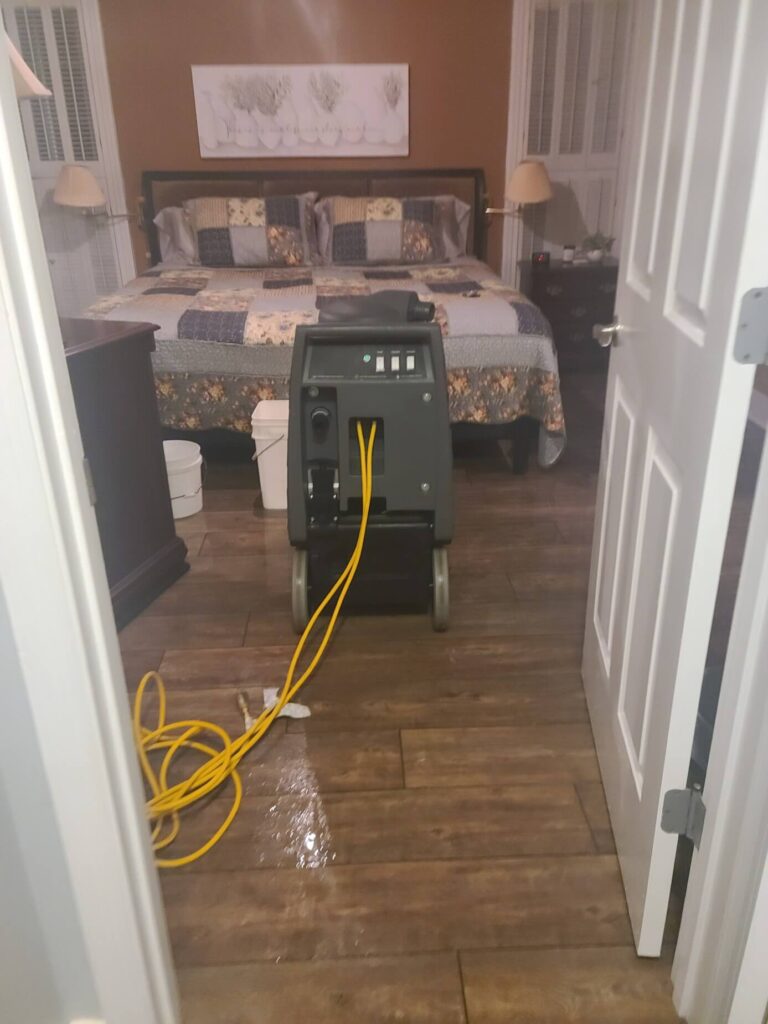
How to Remove & Prevent Mold From Your Flood-Damaged Floor
After water damage, immediate action is necessary to prevent a mold and mildew infestation. Mold colonies can take root in as little as 24 hours after water damage, so starting the drying process as quickly as possible can prevent a host of health problems for you and your family.
To stop mold from spreading after a flood, take the following precautions:
- Start the drying process as soon as it is safe
- Dry your sub flooring too
- Double check that your insulation was not exposed to water, if it it was, replace it
- Wear protective gear like rubber gloves, boots, and clothing
- Sanitize all damaged areas and items, including floors, walls, furniture, and clothing, with a bleach and baking soda solution to kill mold spores.
- Hire a water restoration company to ensure everything is dry, sanitized, and mold-free
If you have more than 10 square feet of mold growth or have a health condition like asthma, mold exposure may be too toxic to safely take on yourself. If there’s any chance you or your family’s health may be compromised by mold exposure, calling a professional mold and water restoration service is your only option.
Protect Your Home From Flood or Water Damage
Water damage doesn’t just come from floods. You may have water leaks from a burst pipe, cracked foundations, or water heater emergencies. Take the following steps to protect your home from serious water damage:
- Ensure any wood in your home, from wood furniture to wood doors to hardwood floors, is properly sealed. A was or polyurethane sealant on your wood floor, doors, and furniture will prevent swelling, wood rot, and mold.
- Make sure your gutters are clean, and have your plumbing inspected yearly. This can help you stay on top of cracked gutters and leaky pipes, preventing a water leak emergency.
- Make sure that non-flushable items don’t make it into your sewer line.
- Keep your windows shut to regulate your indoor moisture level during heavy rains and high-humidity days, and regularly inspect moulding along your windows for signs of seepage.
- Don’t use cardboard boxes for storage. These don’t protect well against water or pests. Instead, use air-tight rubber containers. For important documents like birth certificates, consider a water and fire-proof safe or file box.
- Double check your air conditioning and heating system. Air conditioners and water heaters are some of the most common causes of water damage in homes.
- Install a sump pump and generator. Even in a power outage, you can remove water from your home quickly.
- Invest in a wet dry vacuum: For fast water and moisture removal, a wet dry vacuum means you can start the drying process immediately.
- Update your insurance policy. Make sure you are ensured for all types of water and flood damage, so you don’t have to worry about the financial impact.
Flood Kings Can Help Your Family Get Back to Normal
After a flood, lowering moisture content and starting the drying process for your water damaged floors in critical for preserving the health of your family, minimizing the damage to your home, and getting back to normal quickly.
From small water leaks to serious flood damage, we’ll take on the entire drying process for you, with industrial-grade wet dry vacuums, dehumidifiers, mold and bacteria sanitation equipment. We’ll also coordinate with your insurance company and direct you to third party restorers, if your hardwood floors, walls, or doors needs additional repairs.
Don’t risk permanent damage to your home; call Flood Kings today at 615-477-9968. We have operators standing by 24/7 to ensure you get the help you need as fast as possible.


